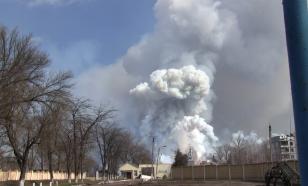Bush to Unveil Super-Flu Strategy
The Bush administration is getting the nation prepared for a possible travel ban and other restrictions in the event of a worldwide flu outbreak.
Improving vaccines is expected to take center stage as President Bush announces his strategy Tuesday to battle the next flu pandemic, whether it is caused by the worrisome Asian bird flu or some other super-strain of influenza. Preparations are expected to cost at least $6.5 billion.
States and cities are awaiting their first specific instructions on such things as who should get limited doses of vaccines and the antiviral medications Tamiflu or Relenza.
Topping that list are workers involved in manufacturing flu vaccine, health workers caring for the ill, and other first responders such as police and ambulance drivers, said a public health specialist shown a recent version of the plan.
In his speech Tuesday at the National Institutes of Health, Bush will first note that it will take more than the federal government to battle a super-flu.
"America has this tough-it-out strategy when you get sick," White House spokesman Trent Duffy said.
Pandemics strike when the easy-to-mutate influenza virus shifts to a strain that people have never experienced before, something that has happened three times in the last century. While it is impossible to say when the next super-flu will strike, concern is growing that the bird flu strain known as H5N1 could trigger one if it mutates to start spreading easily among people.
Today, most of the world's vaccine against regular winter flu, including much of that used by Americans each flu season, is manufactured in factories in Britain and Europe.
The government already has ordered $162.5 million worth of vaccine to be made and stockpiled against the Asian bird flu, more than half to be made in a U.S. factory.
But the administration plan, to be released in more detail on Wednesday, calls for more than stockpiling shots. It will stress a new method of manufacturing flu vaccines - growing the virus to make them in easy-to-handle cell cultures instead of today's cumbersome process that uses millions of chicken eggs - as well as incentives for new U.S.-based vaccine factories to open.
Such steps will take several years to implement, but the hope is that eventually they could allow production of enough vaccine to go around within six months of a pandemic's start, the AP reports.
V.Y.
Subscribe to Pravda.Ru Telegram channel, Facebook, RSS!


